MARCH 28, 2020 : I am a sucker for waterfalls. There is something about seeing the water cascading down and hearing the gush as it falls that I find enchanting. On Tuesday (only a few days ago but already seems like very long ago), we went on a 7 km hike in Mt. Field National Park to see three waterfalls.
The first waterfall, Russell Falls, was reached by a paved walkway – wheelchair accessible. Along the way, we saw some very tall, large trees characteristic of this area. We also saw up-close a pademelon – a small, brown remember of the kangaroo family. Turns out that there are three categories in the kangaroo family – pademelons, wallabies, and kangaroos – and the three names refer to the three different size groups. All along we thought we had been seeing wallabies, but they are really pademelons. We eventually reached Russell Falls, and they were surprisingly high– the water falling down in a series of steps – a tiered–cascade waterfall.


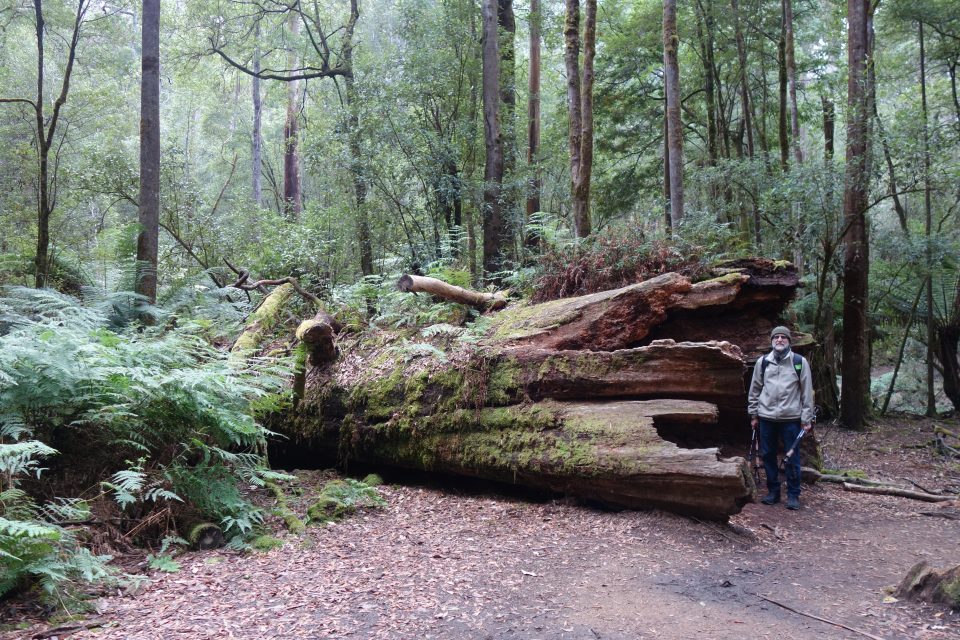
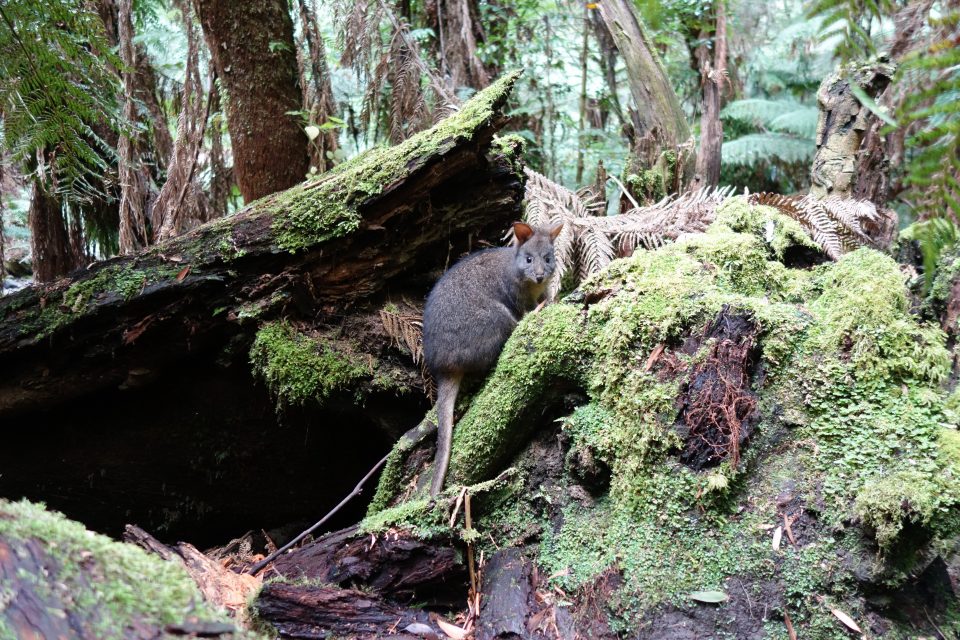
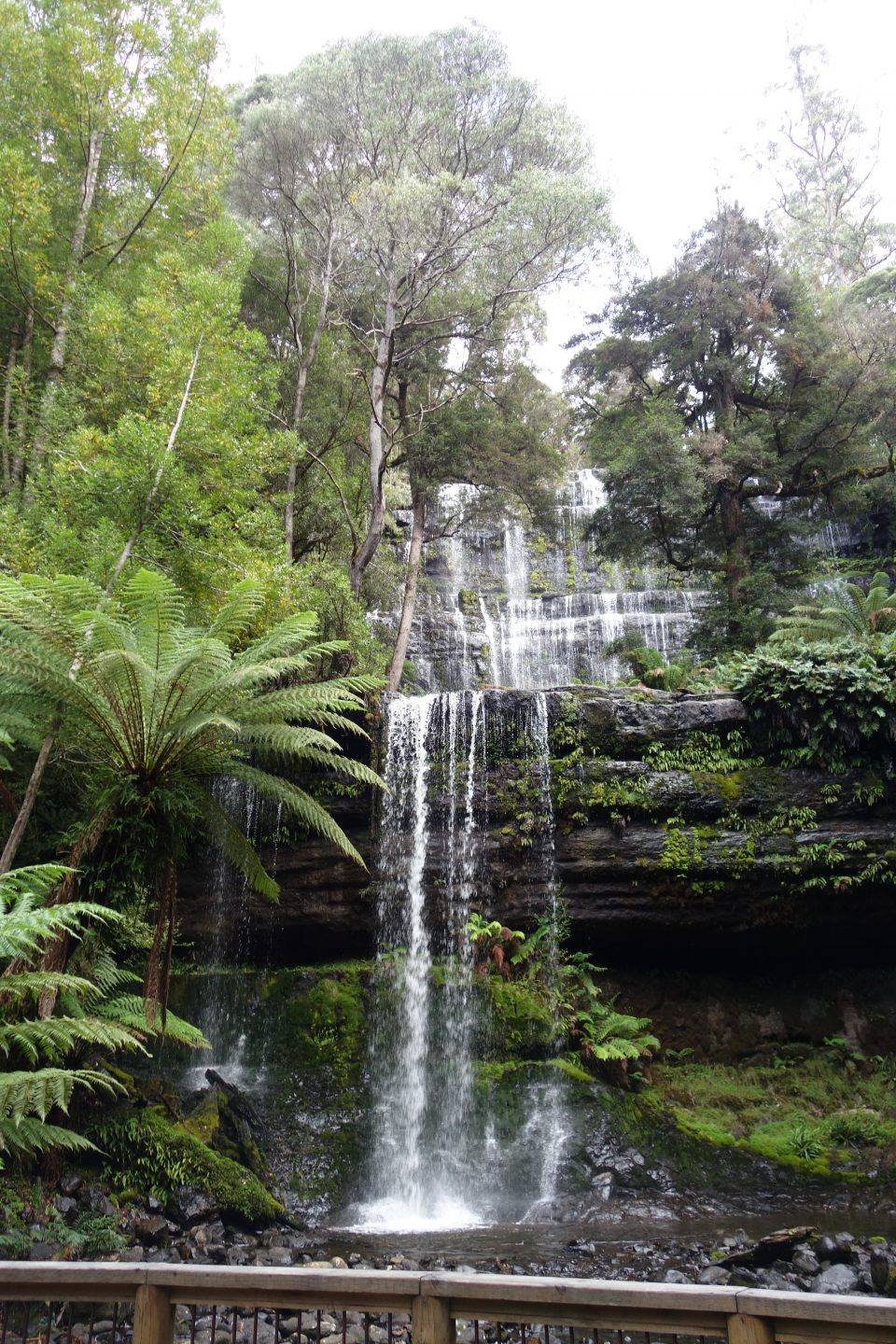
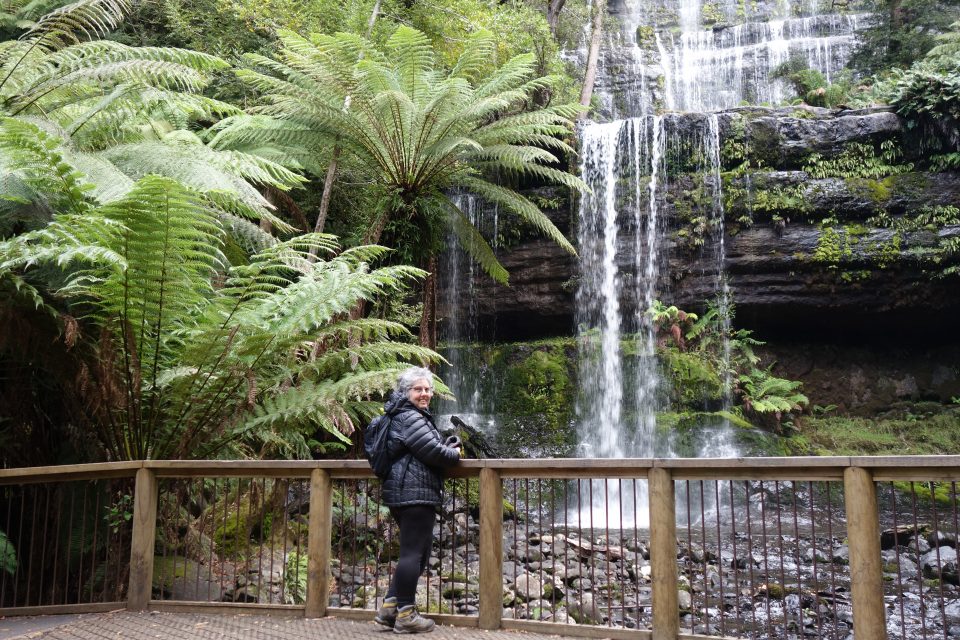
The second waterfall was Horseshoe Falls. To reach these falls you needed to climb 200 steps to the top of Russell Falls and then make your way a short distance along the Russell river. Horseshoe Falls was two small parallel falls – Mark called them his and hers.
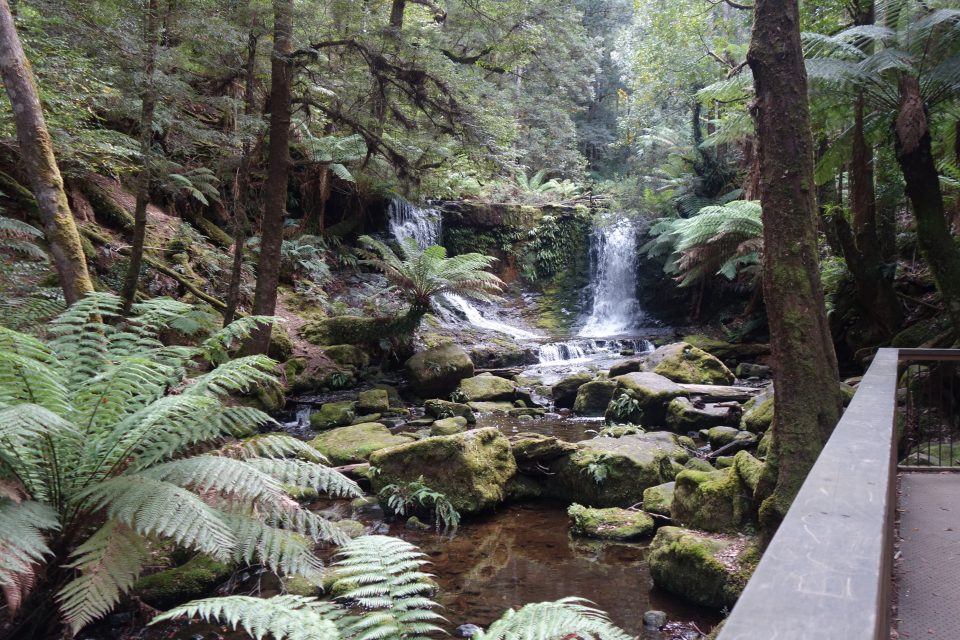
From there, we headed towards Lady Barron Falls. On the way we went through the Tall Tree Walk – also known as Land of the Giants. The tallest trees in Tasmania are located in this area. They are the world’s second tallest trees, second only to the Redwoods in California. These trees are over 400 years old and have survived fires, wind and snowstorms. At one point along the trail there was a clinometer, an instrument used to measure the height of trees. You point it to the very top of a tree, and based on the angle it is at, you can measure the height of a tree. The tree we measured was 79 meters tall – this is the equivalent to a 23-story building! Wow!
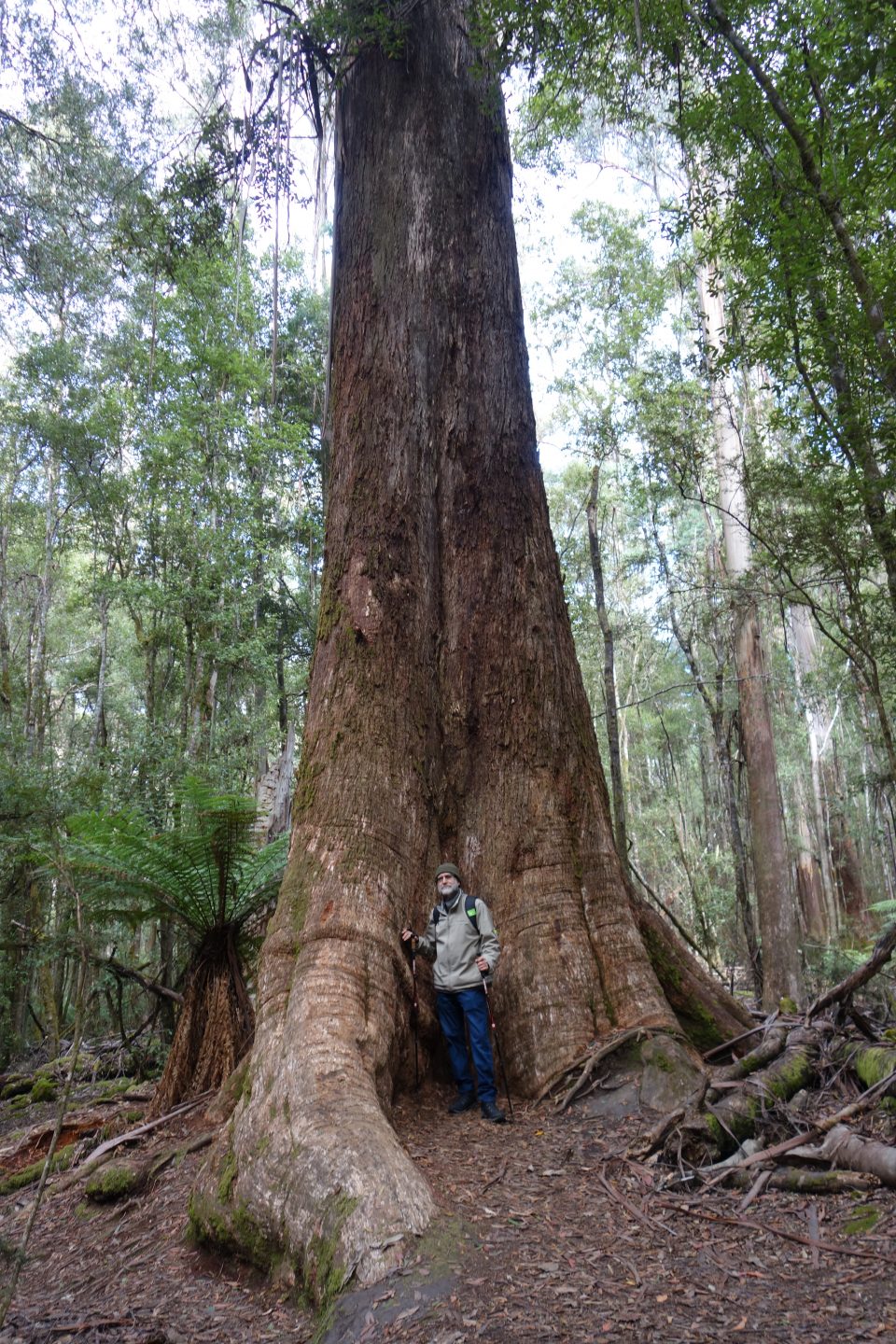

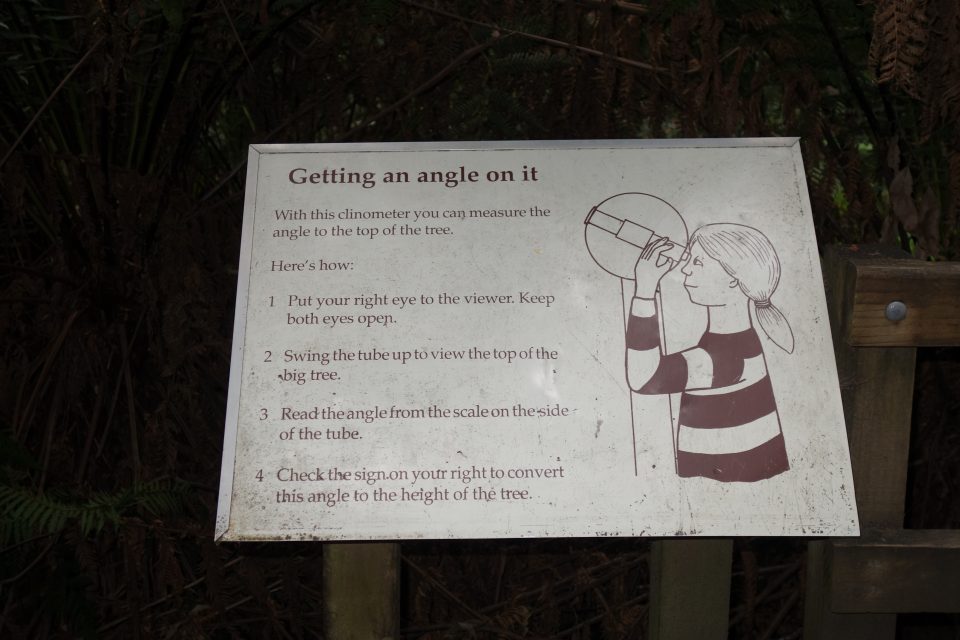
From the beginning of our stay in Tasmania, we have seen these huge impressive fern plants in many places. The way to the third waterfall was full of them. I learned that they are called Fern Trees. Makes sense.
At the third waterfall, Lady Barron Falls, the viewing platform is very close to the water. The sound was almost deafening – we could not hear each other speak.
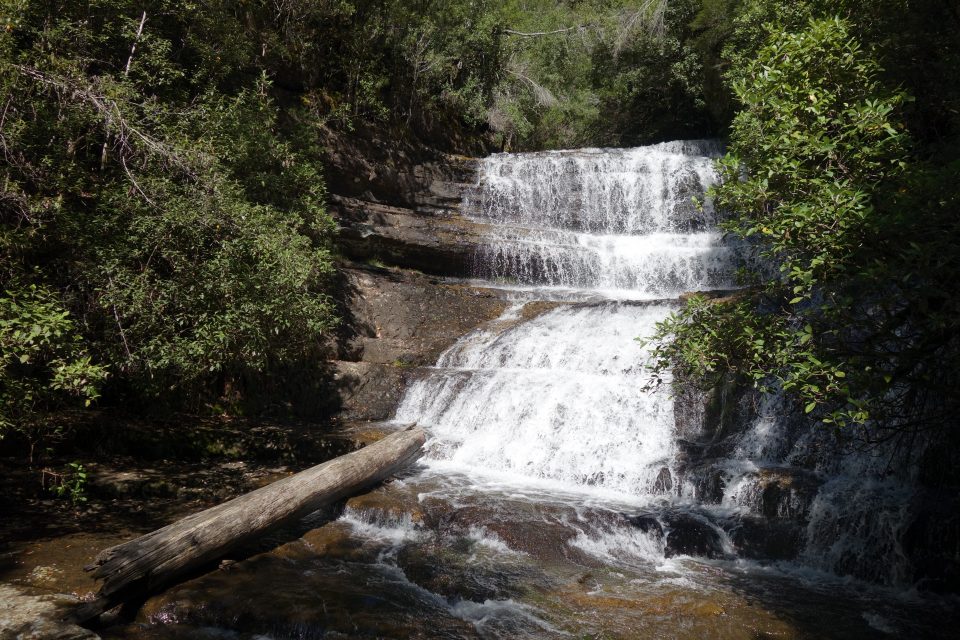
From the Falls, we returned to the Visitor Center – via a 239-step climb. Luckily benches were strategically placed among the stairs for short rests on the way up. And yes, I do count the steps as I go up.
After a picnic lunch in front of the Visitor Center, we drove to New Norfolk through farmland on rolling hills and checked into the caravan park. The campground was situated on the Derwent River and was congested with many residents who seem to live there permanently.
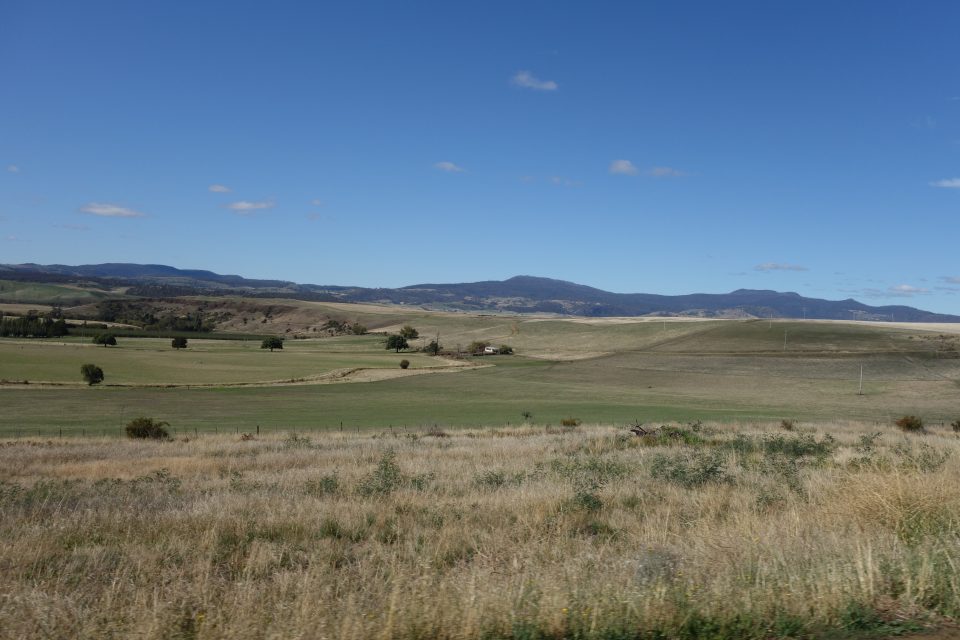
Australia has two large supermarket chains – Coles and Woolworth (often referred to as Woolies). Large cities, like Melbourne have both chains. Large towns usually have one of the two. Small towns usually have a local, very small Mom & Pop type general store. In New Norfolk, a town with a population of about 5000, there was a large Woolworth. Mark did the shopping and was excited to find eggplant. Not everything we have abundantly at home is easily available here. On the other hand, we are enjoying a few things not as common at home – blueberries, raspberries, pineapple and purple kale.
After shopping, we made dinner, showers and into bed. Another nice day.
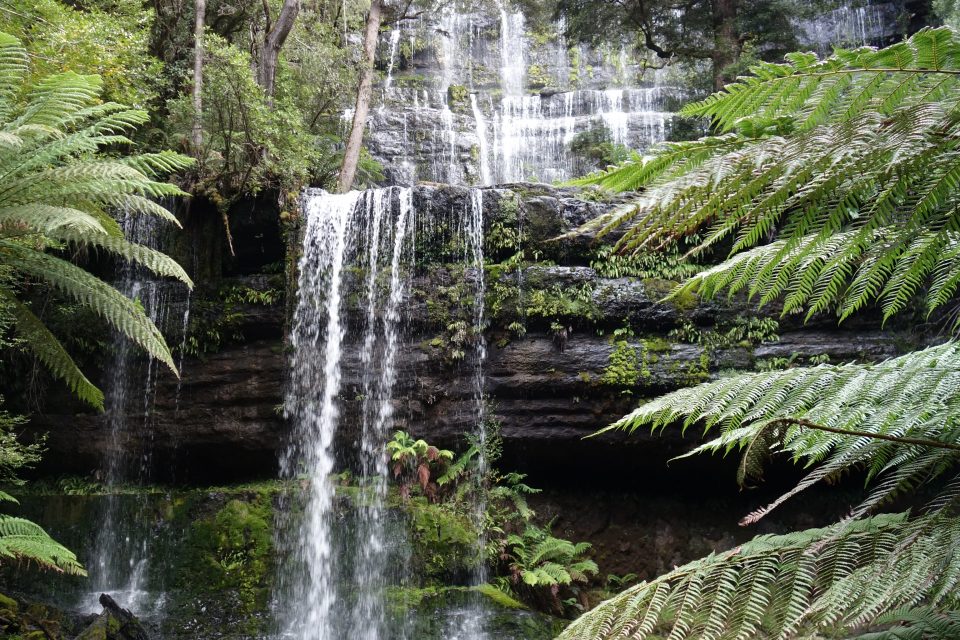
Wow! the falls and everything looks stunning. Okay, those were two words I had never before heard in my life…a pademelon is not some kind of melon?? and a clinometer is not a device to measure how long you wait in a doctor’s waiting room? Even if these pictures do not do justice, it looks a little prettier than Raanana (even though we have more supermarkets than New Norfolk.